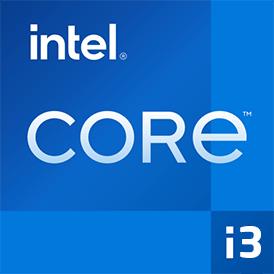 Geekbench 3, 64bit (Multi-Core)
Geekbench 3, 64bit (Multi-Core)
|
|
Intel Core i5-4670T
4C 4T @ 2.3 GHz
|
8581
|
|
|
Intel Core i3-4160T
2C 4T @ 3.1 GHz
|
6935
|
 Estimated results for PassMark CPU Mark
Estimated results for PassMark CPU Mark
|
|
Intel Core i5-4670T
4C 4T @ 2.3 GHz
|
4314
|
|
|
Intel Core i3-4160T
2C 4T @ 3.1 GHz
|
3140
|
 Geekbench 3, 64bit (Single-Core)
Geekbench 3, 64bit (Single-Core)
|
|
Intel Core i3-4160T
2C 4T @ 3.1 GHz
|
3305
|
|
|
Intel Core i5-4670T
4C 4T @ 2.3 GHz
|
3043
|
 Geekbench 6 (Multi-Core)
Geekbench 6 (Multi-Core)
|
|
Intel Core i5-4670T
4C 4T @ 2.3 GHz
|
2749
|
|
|
Intel Core i3-4160T
2C 4T @ 3.1 GHz
|
1923
|
 Geekbench 5, 64bit (Multi-Core)
Geekbench 5, 64bit (Multi-Core)
|
|
Intel Core i5-4670T
4C 4T @ 2.3 GHz
|
2427
|
|
|
Intel Core i3-4160T
2C 4T @ 3.1 GHz
|
1476
|
 Geekbench 6 (Single-Core)
Geekbench 6 (Single-Core)
|
|
Intel Core i5-4670T
4C 4T @ 2.3 GHz
|
989
|
|
|
Intel Core i3-4160T
2C 4T @ 3.1 GHz
|
955
|
 Geekbench 5, 64bit (Single-Core)
Geekbench 5, 64bit (Single-Core)
|
|
Intel Core i5-4670T
4C 4T @ 2.3 GHz
|
780
|
|
|
Intel Core i3-4160T
2C 4T @ 3.1 GHz
|
678
|
 Cinebench R15 (Multi-Core)
Cinebench R15 (Multi-Core)
|
|
Intel Core i5-4670T
4C 4T @ 2.3 GHz
|
404
|
|
|
Intel Core i3-4160T
2C 4T @ 3.1 GHz
|
316
|
 iGPU - FP32 Performance (Single-precision GFLOPS)
iGPU - FP32 Performance (Single-precision GFLOPS)
|
|
Intel Core i5-4670T
4C 4T @ 2.3 GHz
|
384
|
 Cinebench R15 (Single-Core)
Cinebench R15 (Single-Core)
|
|
Intel Core i5-4670T
4C 4T @ 2.3 GHz
|
128
|
|
|
Intel Core i3-4160T
2C 4T @ 3.1 GHz
|
125
|
 Cinebench R11.5, 64bit (Multi-Core)
Cinebench R11.5, 64bit (Multi-Core)
|
|
Intel Core i5-4670T
4C 4T @ 2.3 GHz
|
4.6
|
|
|
Intel Core i3-4160T
2C 4T @ 3.1 GHz
|
3.4
|
 Cinebench R11.5, 64bit (Single-Core)
Cinebench R11.5, 64bit (Single-Core)
|
|
Intel Core i5-4670T
4C 4T @ 2.3 GHz
|
1.5
|
|
|
Intel Core i3-4160T
2C 4T @ 3.1 GHz
|
1.3
|

